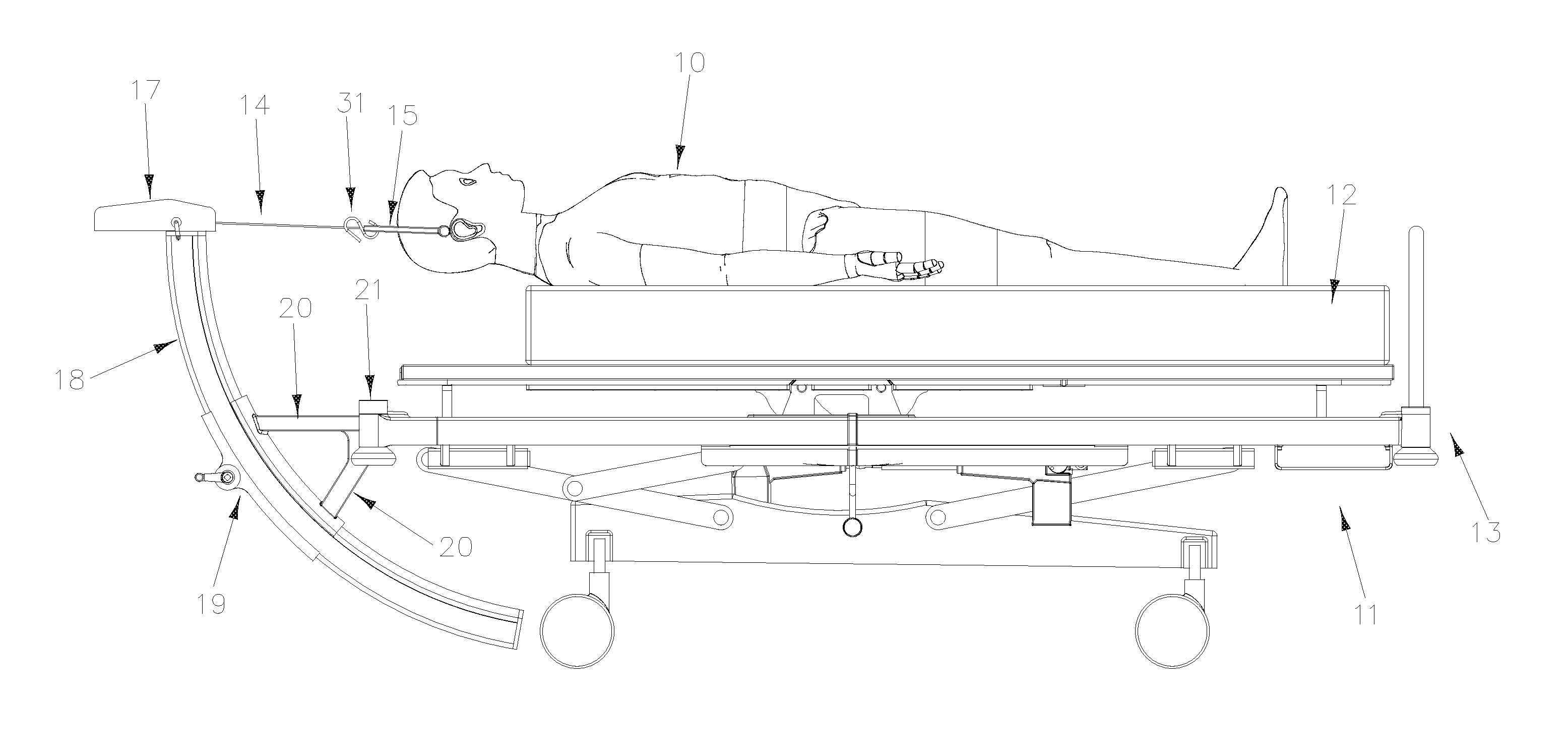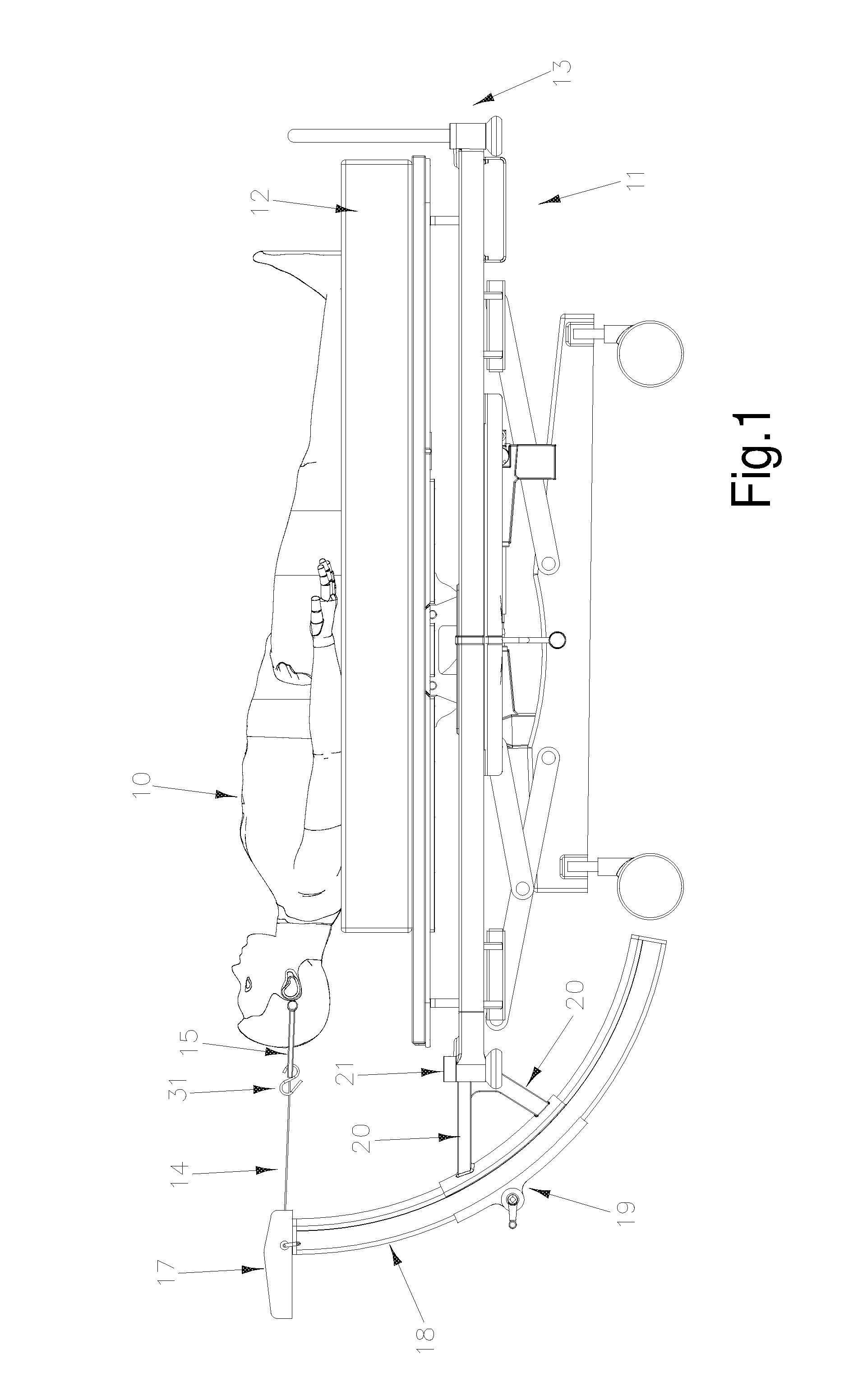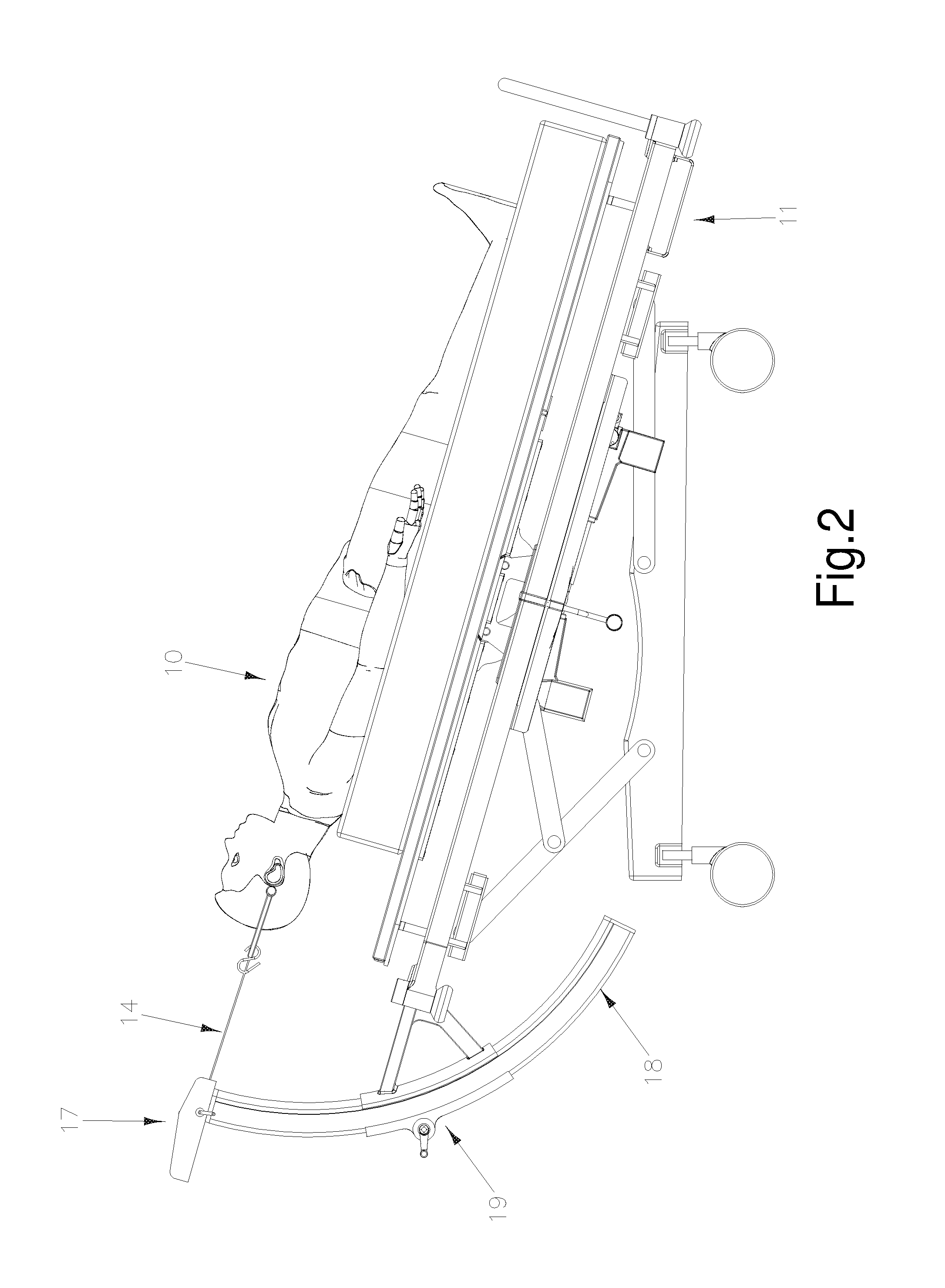Cervical Traction Device
a cervical vertebrae and traction technology, applied in the field of traction devices, can solve the problems of difficulty in breathing, affecting the arms and legs, and affecting the cord trauma of the cervical vertebrae,
- Summary
- Abstract
- Description
- Claims
- Application Information
AI Technical Summary
Benefits of technology
Problems solved by technology
Method used
Image
Examples
Embodiment Construction
[0033]Referring to the drawings, as shown in FIGS. 1-4, a patient 10 to be treated for fracture dislocations of the cervical spine is supported upon a support surface 11 in the form of a Howard Wright trauma stretcher. The trauma stretcher is of known type, and provides a mattress 12 carried upon a mobile base 13 which can be adjusted in angle (see FIGS. 2 and 3). The base 13 can be tilted from the ‘base’ position shown in
[0034]FIG. 1, in which the plane of the base is substantially horizontal, up to a position in which the plane of the base is at about 25° to the horizontal, or even up to 45°. The base 13 also may be tilted to any of a range of positions between these extremes. The stretcher also provides means for securing the patient to the stretcher, so that traction can be applied as described below without actually pulling the patient along the stretcher.
[0035]For clarity, in the drawings the head of the patient 10 is shown unsupported, with the patient's shoulders aligned wit...
PUM
 Login to View More
Login to View More Abstract
Description
Claims
Application Information
 Login to View More
Login to View More - R&D
- Intellectual Property
- Life Sciences
- Materials
- Tech Scout
- Unparalleled Data Quality
- Higher Quality Content
- 60% Fewer Hallucinations
Browse by: Latest US Patents, China's latest patents, Technical Efficacy Thesaurus, Application Domain, Technology Topic, Popular Technical Reports.
© 2025 PatSnap. All rights reserved.Legal|Privacy policy|Modern Slavery Act Transparency Statement|Sitemap|About US| Contact US: help@patsnap.com



